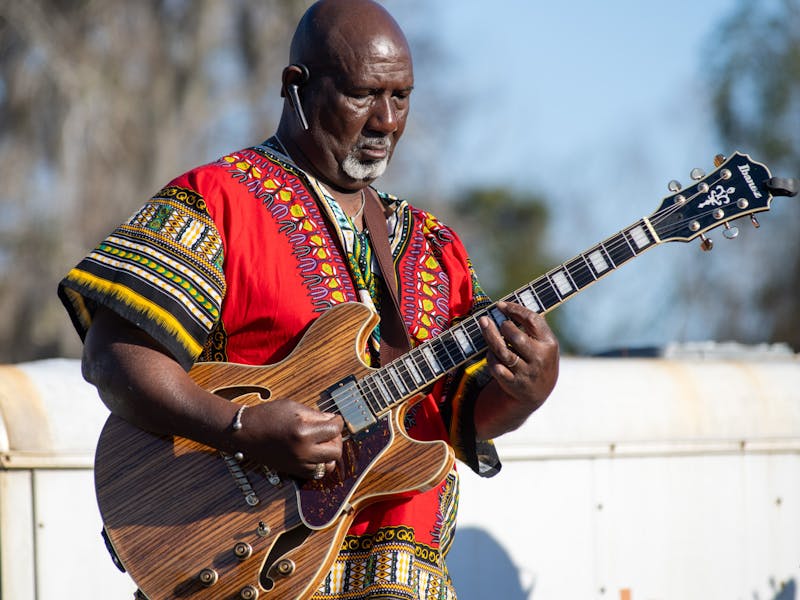Photo by Coleman Rojahn
The modest fashion industry has seen an explosion of growth in the current decade, blossoming from a niche market to a billion-dollar industry. But what is it? In the era of Instagram booty culture and #FreeTheNipple, the idea of women feeling the need to cover up can sound like a relic, something of the past. Sure, modest clothing for women has a long history as an oppressive tool to enforce the patriarchy. But there’s a group of designers out there trying to reclaim the practice, building and reshaping it into a medium for women’s empowerment.
There’s a lot of discourse right now about how even though we’ve grown a lot more accepting of women showcasing their bodies, a lot of it still caters to the male gaze. Which is interesting in the context of the fashion world because even though most clothing is marketed towards women, the majority of working fashion designers are men.
The originators of the modest fashion movement, however, are women like Batsheva Hay of Batsheva Dresses. She founded her label looking to create a brand that catered to the desires of other Orthodox Jewish women. Her goal was produce high-quality, fashionable pieces that also catered to tzniut, the principle of dress Orthodox Jewish women adhere to. Her design didn’t just appeal to Jewish people, though. Though it was conceived to serve the needs of Orthodox Jewish and Christian women, her variations on traditional styles have attracted attention from people of every sort all over the world.
There are also labels like Haute Hijab, a brand founded by former lawyer Melanie Elturk with the goal of creating hijabs she and other Muslim women could feel comfortable, proud and powerful wearing – a monumental task, as the 9/11 terrorist attacks garnered a response from the fashion industry in the form of distancing itself from anything associated with Islam. It didn’t stop Elturk from creating one of the most successful Muslim fashion labels out there, no longer limited to just hijabs. She also sells a gorgeous variety of skirts, wraps and dresses for anyone of any faith to browse.
Though the roots of the modest fashion movement are in religious communities, it has appeals that apply to anyone of any faith or lack thereof. You just have to want to try it. And there are a lot of practical reasons to follow these styles and these designers. For starters, their pieces look amazing. More fabric means more room for experimentation, more patterns, more variation on traditional styles once dismissed as the territory of the stuffy and old-fashioned.
The fact that most modest designers are women also plays a massive part in what makes this style special. Since it’s women making clothes for women, they’re taking into account lots of practical problems when it comes to clothes. The goal is to create pieces that are both beautiful and have a high degree of functionality, something a lot of mainstream designers neglect when it comes to women’s clothing. That’s right, ladies. I’m talking about pockets. Big pockets.
While modest fashion has existed in some form or another for thousands of years, what makes this surge in popularity different is the way the internet comes into play. Like any fashion trend in the 2010s, it’s highly driven by a vast community of influencers. There are Instagrammers, bloggers, YouTubers and more that have garnered thousands of followers looking for new ways to explore what’s possible while also staying true to their own chosen aesthetic.
For example, YouTuber Daniela Biah runs a fashion and lifestyle channel that boasts over half a million subscribers. She herself is Muslim and a lot of her content covers things like how to style a hijab and tips on living halal, but she also makes video guides giving tips on how to meet modesty guidelines in creative ways like layering and accessorizing. Another popular modest style guru, Emily Smith of the Instagram account @modestgoddess_, is a member of the Church of Jesus Christ of the Latter-day Saints. She wears what’s called a temple garment under her clothes, meaning she prefers to always stay covered. She started a blog as a way to show other women ways to work within the bounds modestly while also creating an image for themselves that they feel proud in.
Still, though, modest fashion brands, influencers and designers are often met with a lot of backlash. Modesty already often falls into the category of dowdy and uncool when it comes to mainstream standards, and a lot of it is also fueled by Islamophobia and stigma against certain religions. It’s important to note that while modesty is something still forced upon women all over the world, that’s not the goal of people like Hay, Elturk, Biah or Smith.
The driving idea behind modest fashion is choosing modest fashion. “I know some people will think modest fashion is regressive and telling a woman to cover themselves, but I actually feel like the women it appeals to want to wear stuff that’s fun and don’t have to worry about being a sex object for a man,” Hay said in an interview with Vogue last October. For her and designers like her, this is about reclaiming the practice from those who made it oppressive. It’s about returning that agency to the women wearing the clothes. This is for them a way to express not only their style, but their beliefs, values and choice when it comes to how they show themselves to the world.



